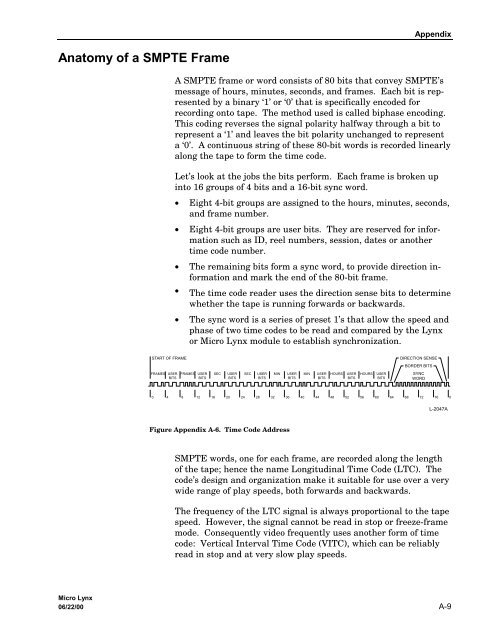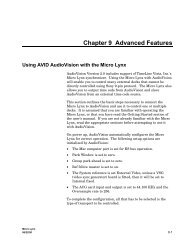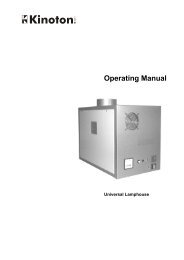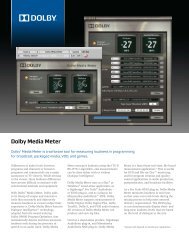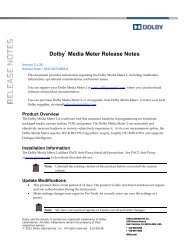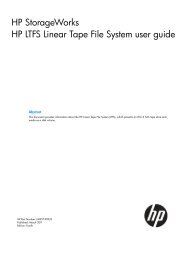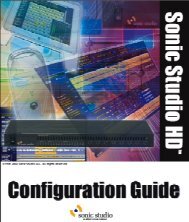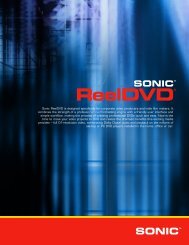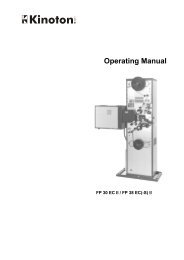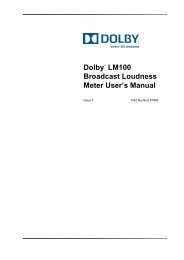Cable Reference Guide - Audio Intervisual Design, Inc.
Cable Reference Guide - Audio Intervisual Design, Inc.
Cable Reference Guide - Audio Intervisual Design, Inc.
- No tags were found...
You also want an ePaper? Increase the reach of your titles
YUMPU automatically turns print PDFs into web optimized ePapers that Google loves.
AppendixAnatomy of a SMPTE FrameA SMPTE frame or word consists of 80 bits that convey SMPTE’smessage of hours, minutes, seconds, and frames. Each bit is representedby a binary ‘1’ or ‘0’ that is specifically encoded forrecording onto tape. The method used is called biphase encoding.This coding reverses the signal polarity halfway through a bit torepresent a ‘1’ and leaves the bit polarity unchanged to representa ‘0’. A continuous string of these 80-bit words is recorded linearlyalong the tape to form the time code.Let’s look at the jobs the bits perform. Each frame is broken upinto 16 groups of 4 bits and a 16-bit sync word.• Eight 4-bit groups are assigned to the hours, minutes, seconds,and frame number.• Eight 4-bit groups are user bits. They are reserved for informationsuch as ID, reel numbers, session, dates or anothertime code number.• The remaining bits form a sync word, to provide direction informationand mark the end of the 80-bit frame.• The time code reader uses the direction sense bits to determinewhether the tape is running forwards or backwards.• The sync word is a series of preset 1’s that allow the speed andphase of two time codes to be read and compared by the Lynxor Micro Lynx module to establish synchronization.START OF FRAMEFRAMES USERBITSFRAMESUSERBITSSECUSERBITSSECUSERBITSMINUSERBITSMINUSERBITSHOURSUSERBITSHOURSUSERBITSDIRECTION SENSEBORDER BITSSYNCWORD0 4 8 12 16 20 24 28 32 36 40 44 48 52 56 60 64 68 72 76 0L-2047AFigure Appendix A-6. Time Code AddressSMPTE words, one for each frame, are recorded along the lengthof the tape; hence the name Longitudinal Time Code (LTC). Thecode’s design and organization make it suitable for use over a verywide range of play speeds, both forwards and backwards.The frequency of the LTC signal is always proportional to the tapespeed. However, the signal cannot be read in stop or freeze-framemode. Consequently video frequently uses another form of timecode: Vertical Interval Time Code (VITC), which can be reliablyread in stop and at very slow play speeds.Micro Lynx06/22/00 A-9


